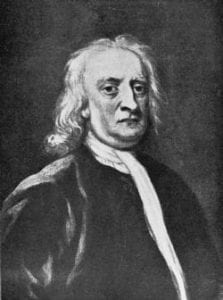The Newtonian Moment – free talk explores Sir Isaac Newton’s scientific legacy
12 May 2017
The genius of Lincolnshire’s most famous scientific son will be the subject of a free public talk later this month, as the University of Lincoln, UK, opens the doors to its new £28 million Isaac Newton Building for the first time. The Newtonian Moment will be the first public event to take place in the University’s […]

 The genius of Lincolnshire’s most famous scientific son will be the subject of a free public talk later this month, as the University of Lincoln, UK, opens the doors to its new £28 million Isaac Newton Building for the first time.
The genius of Lincolnshire’s most famous scientific son will be the subject of a free public talk later this month, as the University of Lincoln, UK, opens the doors to its new £28 million Isaac Newton Building for the first time.
The Newtonian Moment will be the first public event to take place in the University’s flagship 500-seat lecture theatre in the major new science facility – named after the great mathematician and physicist who lived in Woolsthorpe-by-Colsterworth near Grantham, Lincolnshire.
Bringing together expertise in physics and the history of science, the free-to-attend lecture will shine a light on Sir Isaac Newton’s greatest discoveries, which include some of the most important laws of mathematics and physics that still shape the way we think about the universe today.
The Newtonian Moment takes place in the Isaac Newton Building lecture theatre at 6pm on Wednesday 31st May 2017. It is free to attend but places should be booked in advance online.
The lecture, presented by the University of Lincoln’s Dr Anna Marie Roos and Dr Fabien Paillusson, will combine insights from the worlds of science, history and the arts.
Based in the School of History and Heritage at Lincoln, Dr Roos specialises in the history of science and medicine. Her work focuses on the study of the early Royal Society – the UK’s foremost learned society for science – of which Sir Isaac Newton was president from 1703 until his death in 1727. She also specialises in natural history, chemistry, and medicine in the seventeenth and eighteenth centuries. Dr Roos is a Fellow of the Society of Antiquaries, a Fellow of the Linnean Society of London, and a visiting fellow at All Souls College at the University of Oxford.
She will share the stage with Dr Fabien Paillusson to deliver the public talk examining the history and significance of Newton’s most notable discoveries. Dr Paillusson is a lecturer in the School of Mathematics and Physics at the University of Lincoln and studies a wide range of topics spanning the physical and life sciences, from granular materials to DNA. With a specialist interest in the foundations of physics, Dr Paillusson will explore the momentous impact of Newton’s work on scientific understanding of the physical universe.
Dr Paillusson said: “As we all know from school, one of the most significant insights that we have taken from Newton’s work is that Earth is a single planet amongst many others orbiting around the Sun. However this was not always the predominant view; in fact it was quite the contrary. Before Newton, a very different perspective on the place of man in the cosmos, inherited from ancient Greek thinkers, had survived for almost two thousand years.
“In this short talk, we will discuss some of the arguments which enabled this ancient view to survive for so long and will explore how Newtonian Mechanics address each of them, enabling us to reach the understanding that we have today.”
Dr Roos will discuss the history of Newton’s greatest discoveries, including the famous story of an apple falling from a tree at Woolsthorpe, which is said to have inspired him to speculate on the nature of gravity during his ‘Year of Wonders’ (1665-66).
She said: “Was there a Newtonian moment, a moment of eureka? That is what we will explore in this talk. It is actually more likely that there were several Newtonian moments of historical circumstance that enabled him to make his discoveries, and that he drew very much upon the work of previous scientists and philosophers to do it. Newton’s work was reflective of science as a collective activity.”
The talk is the first public event to be held in the new Sir Isaac Newton Building on the University of Lincoln’s Brayford Pool Campus. The facility is now home to the University’s Schools of Engineering, Computer Science, and Mathematics and Physics, as well as the University’s growing strategic partnership with Siemens. As a hub of teaching and learning, pioneering research, and industry collaboration, the building includes new teaching spaces, specialist robotics facilities, scientific laboratories and workshops, offices, and advanced research equipment.
The new building will eventually form the backdrop for an apple tree grown from a rare cutting taken from the ancient apple tree said to have inspired Sir Isaac Newton. The University of Lincoln was gifted a graft of the tree by Woolsthorpe Manor and the National Trust. The cutting is currently being nurtured by scientists and will ultimately be planted by the Isaac Newton Building.
